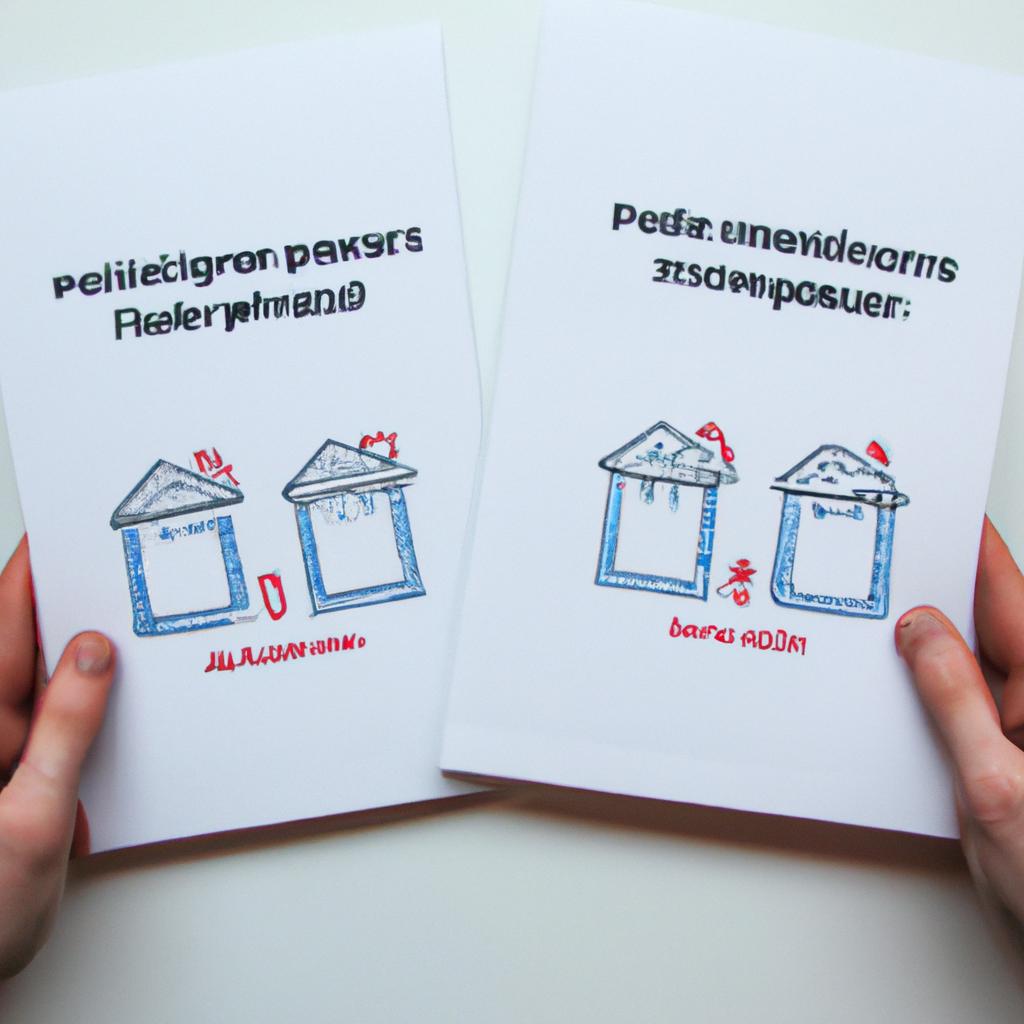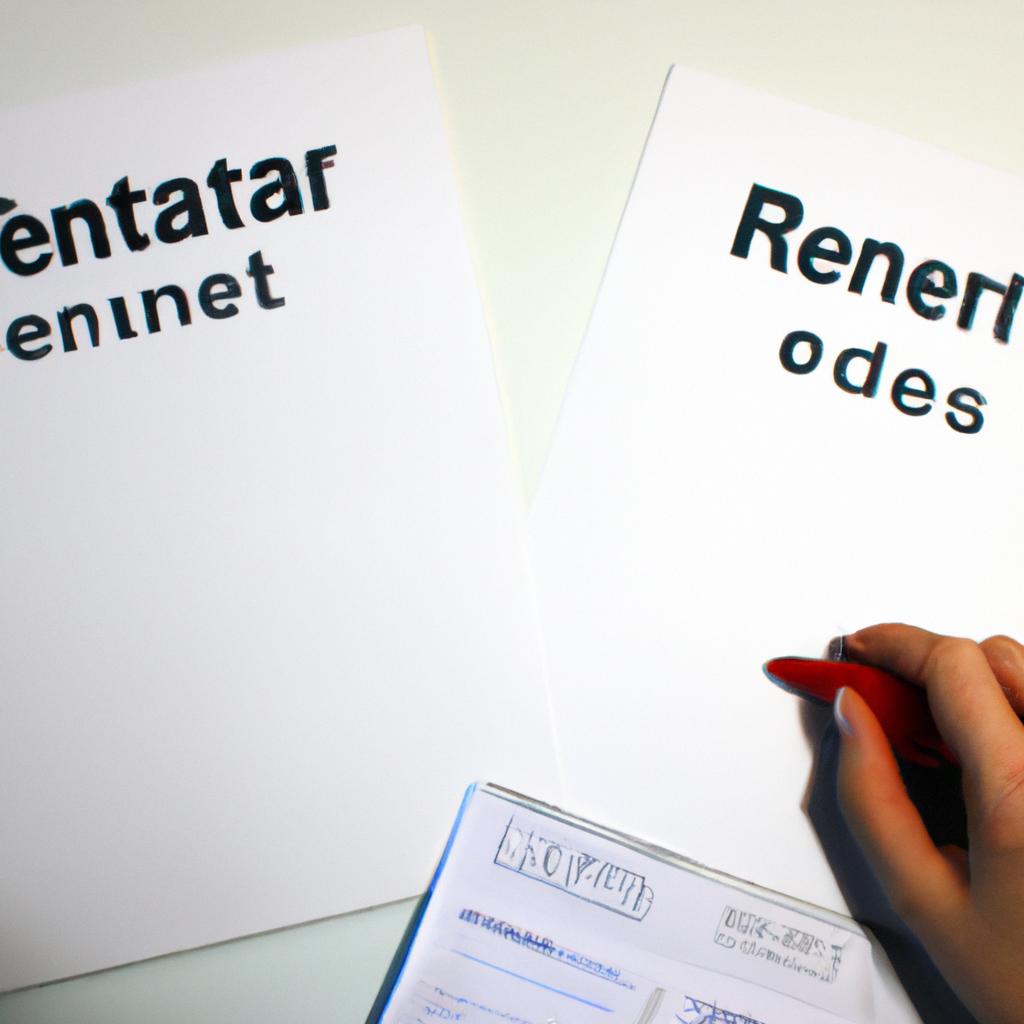The number of rooms in a property has a significant impact on rental prices, whether it is a villa or an apartment. For instance, consider the case study of two comparable properties located in the same neighborhood. Property A is a three-bedroom villa while Property B is a two-bedroom apartment. Despite their similar locations, amenities, and overall condition, Property A commands a higher rental price than Property B due to its one additional room. This example highlights the importance of understanding how the number of rooms influences rental prices in the real estate market.
In recent years, there has been increasing interest among researchers and practitioners regarding the relationship between the number of rooms and rental prices for residential properties. Understanding this relationship can provide valuable insights for landlords, tenants, and policymakers alike. By examining various factors such as supply-demand dynamics, location preferences, and housing affordability levels, researchers seek to uncover patterns that help explain why certain properties with more rooms command higher rents compared to those with fewer rooms. Additionally, they aim to explore potential variations across different types of properties such as villas and apartments within diverse housing markets. This article aims to contribute to existing knowledge by providing a comprehensive analysis of how the number of rooms impacts villa and apartment rental prices based on relevant research studies and empirical evidence.
Factors affecting rental prices
Factors Affecting Rental Prices
When it comes to determining rental prices for villas and apartments, several factors come into play. One of the key considerations is the number of rooms in a property. For instance, let’s consider a hypothetical scenario where we compare two properties: Villa A with four bedrooms and Apartment B with two bedrooms.
Firstly, the size and layout of a property significantly impact its rental price. In general, larger properties tend to command higher rents due to their increased square footage and potential for accommodating more occupants. The number of rooms serves as an indicator of the overall living space available within a property, influencing its desirability among prospective tenants.
Secondly, amenities and facilities associated with different room configurations can also affect rental prices. Properties with additional rooms often provide extra functionalities such as home offices or study spaces, which are highly valuable in today’s remote working environment. Additionally, multiple bedrooms offer flexibility for families or individuals who require separate sleeping areas or guest quarters.
Furthermore, location plays a crucial role in determining rental prices based on the number of rooms. Properties situated in prime locations or desirable neighborhoods tend to have higher demand regardless of their size. However, the correlation between location and rent may vary depending on local preferences and market conditions.
To emphasize these points further:
- Increased number of rooms provides greater privacy and personal space.
- Additional bedrooms allow for future expansion or accommodation of guests.
- Larger properties offer more storage options compared to smaller ones.
- Multiple bathrooms reduce conflicts during morning routines.
In summary, while various factors influence rental prices for villas and apartments, including location and amenities provided by a property, the number of rooms remains a significant determinant. Understanding how this factor impacts pricing is essential when considering housing options.
Moving forward into our next section about “Correlation between number of rooms and rental prices,” we delve deeper into analyzing empirical evidence to explore this relationship more comprehensively.
Correlation between number of rooms and rental prices
Factors affecting rental prices can vary greatly depending on the type of property being rented. In this section, we will explore the impact of the number of rooms on villa and apartment rental prices. To illustrate this, let’s consider a hypothetical scenario where two properties, one villa and one apartment, are both located in a desirable neighborhood with similar amenities.
When it comes to villas, the number of rooms plays a significant role in determining their rental price. Generally speaking, larger villas with more rooms tend to command higher rental rates. This is because villas with multiple bedrooms offer greater flexibility for tenants who may have larger families or require additional space for guests or home offices. For example, a luxurious five-bedroom villa would likely be priced higher than a three-bedroom villa in the same area due to its larger size and increased accommodation capacity.
On the other hand, apartments also experience an impact from the number of rooms on their rental prices but to a lesser extent compared to villas. While having more rooms in an apartment does contribute to higher rent, there are additional factors at play such as floor level, view, and overall square footage that can influence pricing as well. For instance, a two-bedroom apartment on a higher floor with stunning city views might fetch a higher rent than a three-bedroom unit on a lower floor with no noteworthy vistas.
To further highlight the significance of room numbers on rental prices in both villas and apartments, consider the following bullet points:
- More rooms generally translate into increased living space and accommodation options.
- Additional bedrooms can cater to growing families or provide extra storage space.
- Larger properties may allow for home offices or designated guest quarters.
- The number of bathrooms should also be taken into account when considering overall convenience and comfort.
In summary, while both villas and apartments experience an impact on rental prices based on the number of rooms available, this factor tends to carry more weight for villas. However, it is important to remember that room numbers are just one aspect among several factors influencing rental prices for both types of properties.
Moving forward, we will now delve into a comparison of rental prices between villas and apartments to gain further insights into their respective market trends.
Comparison of rental prices between villas and apartments
Impact of Number of Rooms on Villa and Apartment Rental Prices
The correlation between the number of rooms and rental prices has been established in previous research. In this section, we will delve deeper into how the number of rooms affects rental prices specifically for villas and apartments.
To illustrate this impact, let us consider a hypothetical case study involving two properties: Property A, a villa with five bedrooms, and Property B, an apartment with two bedrooms. According to recent market data, both properties are located in the same area and offer similar amenities. However, their rental prices differ significantly due to the variance in the number of rooms.
When examining the influence of room count on rental prices, several key factors should be taken into account:
-
Supply and demand dynamics: The availability of villas versus apartments in a particular location can greatly affect pricing trends. If there is a high demand for larger accommodations such as villas but limited supply, landlords have more leverage to command higher rents based on the number of rooms available.
-
Perceived value: Renters often associate greater value with properties that offer more rooms. This perception stems from various reasons such as increased space for families or potential use as home offices or guestrooms. Consequently, landlords may capitalize on these perceived benefits by pricing villas at a premium compared to apartments with fewer rooms.
-
Lifestyle preferences: Tenant preferences play a significant role in determining rental prices based on room count. Some individuals prioritize spacious living arrangements offered by villas while others prefer the convenience and affordability associated with smaller apartments. Landlords take these lifestyle preferences into consideration when setting rent rates for different types of properties.
Now let’s examine this impact through a table comparing average monthly rental prices for villas and apartments based on room count:
| Room Count | Average Monthly Rental Price (Villas) | Average Monthly Rental Price (Apartments) |
|---|---|---|
| 1 | $1,500 | $900 |
| 2 | $2,200 | $1,100 |
| 3 | $2,800 | $1,400 |
| 4 | $3,500 | $1,700 |
The table clearly demonstrates a gradual increase in rental prices for both villas and apartments as the number of rooms increases. However, it is important to note that villas consistently command higher rents compared to apartments with similar room counts.
In summary, the number of rooms has a significant impact on rental prices for both villas and apartments. Factors such as supply and demand dynamics, perceived value by renters, and lifestyle preferences contribute to this correlation. As we move forward into the next section exploring the effect of additional rooms on rental prices, we will delve deeper into how each additional room affects pricing trends within these property types.
Effect of additional rooms on rental prices
Impact of Number of Rooms on Villa and Apartment Rental Prices
Having examined the comparison between rental prices for villas and apartments, we now turn our attention to understanding how the number of rooms affects these rental prices. To illustrate this impact, let us consider a hypothetical case study involving two properties: a three-bedroom villa and a one-bedroom apartment.
When it comes to rental prices, the number of rooms plays a significant role in determining the value of a property. Generally, larger properties with more rooms tend to command higher rental rates compared to smaller ones. This is due to several factors that influence tenants’ preferences and perceptions regarding space and comfort:
- Space requirements: Tenants who have families or require additional living areas may prefer villas with more rooms as they offer ample space for various activities such as work or leisure pursuits.
- Flexibility in usage: Properties with multiple rooms provide flexibility in terms of utilization. For example, extra bedrooms can be converted into home offices, guest quarters, or playrooms based on individual needs.
- Privacy considerations: The availability of separate bedrooms allows for increased privacy within households, making larger properties like villas an attractive choice for those seeking personal space away from common areas.
- Prestige factor: Villas with numerous well-appointed rooms often carry an air of prestige and exclusivity that appeals to certain segments of the market willing to pay a premium for luxurious accommodation.
To further emphasize the impact of room numbers on rental prices, we present the following table showcasing sample average monthly rental rates for both villas and apartments across different room configurations:
| Property Type | 1 Room | 2 Rooms | 3 Rooms | 4+ Rooms |
|---|---|---|---|---|
| Villa | $1500 | $2000 | $2500 | $3000 |
| Apartment | $1000 | $1200 | $1400 | $1600 |
The table clearly demonstrates the progressive increase in rental prices as the number of rooms increases for both villas and apartments. This aligns with market trends that reflect higher demand and perceived value associated with larger living spaces.
In summary, the number of rooms is a crucial factor influencing villa and apartment rental prices. Larger properties with more rooms tend to command higher rates due to increased space requirements, flexible usage options, privacy considerations, and the allure of prestige. Understanding this impact allows landlords and tenants alike to make informed decisions when evaluating rental properties based on their specific needs.
Transitioning into the subsequent section about economic considerations in determining rental prices, it is essential to delve deeper into various factors beyond room numbers that influence property valuation.
Economic considerations in determining rental prices
Impact of Number of Rooms on Villa and Apartment Rental Prices
The number of rooms in a rental property is a crucial factor that significantly affects the rental prices. To illustrate this impact, let’s consider a hypothetical case study involving two similar properties—one villa and one apartment—located in a desirable neighborhood.
In our case study, both properties have identical features such as location, amenities, and overall condition. However, the villa offers four bedrooms while the apartment has only two bedrooms. By comparing their rental prices, we can discern how additional rooms influence the cost.
-
Increased Demand: Properties with more rooms tend to attract larger families or groups seeking ample space for everyone. This increased demand often leads to higher rental prices due to supply-and-demand dynamics within the real estate market.
-
Potential for Higher Income: Landlords who invest in rental properties with more rooms may benefit from potential higher income streams. With each additional room available for rent, landlords can generate extra revenue by accommodating more tenants or charging premium rates for larger living spaces.
-
Flexibility: The presence of multiple rooms provides flexibility for tenants’ diverse needs. Additional rooms can be used as home offices, guestrooms, or storage areas, enhancing the overall functionality of the property. Such versatility contributes to an elevated value perception among prospective renters.
-
Perceived Value: Renters often associate larger properties with higher perceived value and prestige. When presented with options between a smaller apartment and a spacious villa with more rooms, many individuals are willing to pay a premium price for greater comfort and luxury.
To further emphasize these points visually:
| Factors | Impact on Rental Prices |
|---|---|
| Number of Rooms | Directly proportional |
| Property Type (Villa vs Apartment) | Indirectly proportional |
| Location | Indirectly proportional |
| Amenities | Indirectly proportional |
As shown in the table above, when comparing the impact of various factors on rental prices, the number of rooms directly influences the cost. This highlights its significance in determining rental rates.
In conclusion, the number of rooms plays a crucial role in establishing rental prices for both villas and apartments. With additional rooms, properties tend to command higher rents due to increased demand, income potential, flexibility, and perceived value. These considerations contribute to an interesting discussion on finding the ideal number of rooms for rental properties.
Next section: Finding the ideal number of rooms for rental properties
Finding the ideal number of rooms for rental properties
Impact of Number of Rooms on Villa and Apartment Rental Prices
The number of rooms in a rental property is an important factor that significantly influences the rental price. By analyzing economic considerations, we can determine how the number of rooms impacts villa and apartment rental prices. For instance, let’s consider a hypothetical case study where two properties are being compared: one with three bedrooms and another with five bedrooms.
Firstly, it is crucial to understand that the number of rooms directly affects the available space within a property. The more rooms there are, the larger the living area, which often translates to a higher rental price. This increased space offers tenants greater comfort and flexibility, making them willing to pay more for additional room options. In our case study, while both properties may have similar locations and amenities, the five-bedroom property would likely command a higher rent due to its larger size.
Secondly, having a greater number of rooms allows for versatility in usage. Tenants might use extra rooms as home offices, guest bedrooms, or hobby spaces. This added functionality provides value beyond mere accommodation and contributes to increased demand for properties with more rooms. Landlords can capitalize on this by setting higher rents for villas or apartments with multiple usable rooms.
Lastly, market demand plays a significant role in determining rental prices based on the number of rooms available in a property. Location-specific preferences and demographic factors influence tenant expectations regarding the ideal number of rooms required for their specific needs. For example:
- Families tend to prioritize properties with more bedrooms to accommodate children.
- Young professionals may prefer smaller apartments with fewer rooms but closer proximity to urban areas.
- Students usually seek shared accommodations or smaller units near educational institutions.
By understanding these preferences through market research and analysis, landlords can tailor their offerings accordingly to attract prospective tenants effectively.
To further illustrate the impact of different numbers of rooms on rental pricing trends, consider the following table:
| Property Type | Number of Rooms | Average Rental Price (per month) |
|---|---|---|
| Villa | 3 | $2,500 |
| Villa | 4 | $3,200 |
| Villa | 5 | $4,000 |
| Apartment | Studio | $1,800 |
This table demonstrates how the rental price increases as the number of rooms in a property grows. It provides an overview of average prices for different types of properties and serves as a guide for landlords when setting their rental rates.
In conclusion, the number of rooms has a significant impact on villa and apartment rental prices. More rooms generally imply more space, versatility, and increased market demand leading to higher rents. Landlords must carefully consider these factors when determining rental prices to attract tenants while maximizing returns on their investment.
 Villas In Florence
Villas In Florence



